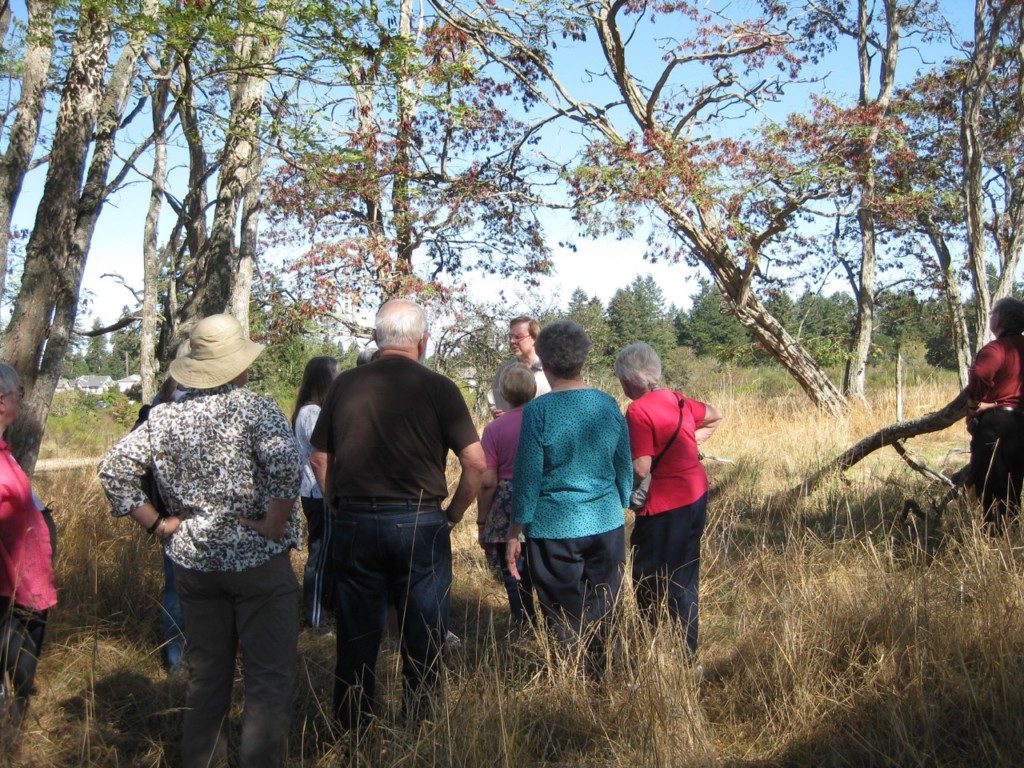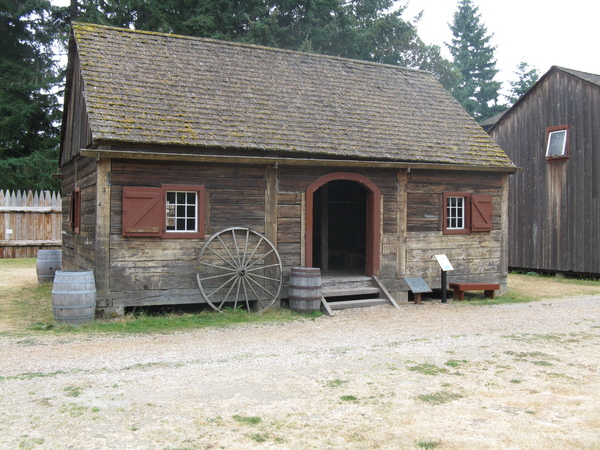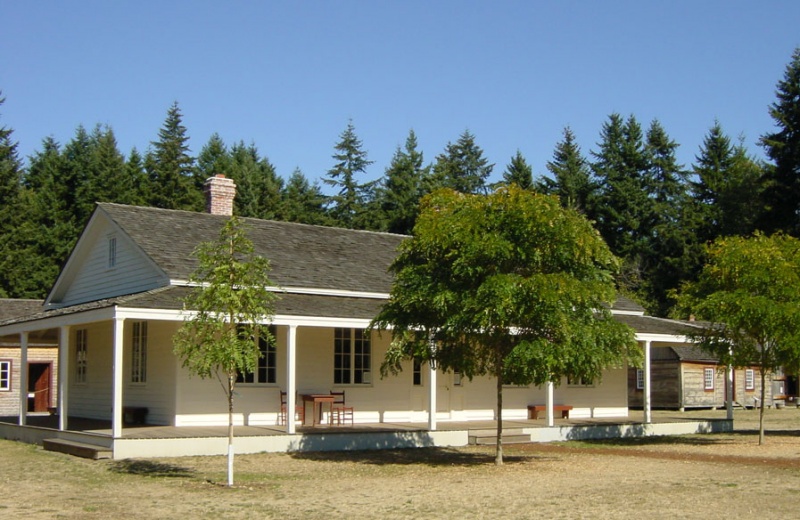In 2016 the Oregon California Trail Association held their Fall meeting in the City of Dupont, Washington. As a special part of the program later in the afternoon a group toured the 1843 Fort Nisqually archaeology site that is protected and preserved by the Archaeological Conservancy, with noted local author and historian Drew Crooks as their tour guide. The group of trees seen in the photos are the original Black Locust trees planted in the early 1850s near the Factors House. The group was very interested in the history of the site and the surrounding area.

Learning the History of the 1843 Fort Nisqually, with scholar Drew Crooks. Photo Credit: Carol Estep, DuPont Historical Society.
Fort Nisqually was the first European settlement on Puget Sound. The Hudson’s Bay Company (HBC) of London, a vast fur trading enterprise chartered by King Charles of England in 1670, established it in 1833. The original site was on the beach and plains above the Nisqually River delta in the present town of DuPont, Washington. …
Fort Nisqually was operated and served by Scottish gentlemen, Native Americans, Kanakas (Hawaiians), French-Canadians, West Indians, Englishmen and American settlers. Gradually, Fort Nisqually grew from a remote outpost to a major international trading establishment. A subsidiary, the Puget Sound’s Agricultural Company, was formed to establish new sources of revenue for the HBC. Soon Fort Nisqually was producing crops and livestock for local consumption and export to Russian America, Hawaii, Spanish California, Europe, and Asia. Native Americans were welcomed at Fort Nisqually as friends, customers, fur traders, farm and livestock employees, and as spouses!
Fort Nisqually never had a military purpose, but the palisade does resemble some frontier army stockades. It was only occasionally visited by American and British military personnel during its active years. The 1846 treaty between the United States and Great Britain established the boundary between the two country’s claims at the 49th parallel. This treaty left Fort Nisqually on American soil. With fur trade profits declining [20 years later], increasing competition from American settlers, and mounting harassment from American revenue agents and tax collectors, Fort Nisqually was closed in 1869.
(Source: History of Fort Nisqually website)

Viewing the Site Today 1843 Fort Nisqually, with scholar Drew Crooks. Photo Credit: Carol Estep, DuPont Historical Society.
While the first two sites of the fort have no visible remains on the surface and are protected archaeological sites. Today there is also a park and living history museum of Fort Nisqually at Point Defiance Park, with two of the original buildings preserved. The museum open to the general public and has tons of activities and events for the whole family. If you are visiting the Puget Sound region you can visit the highly rated museum yourself!
“Fort Nisqually is a living history museum where volunteers and staff, in period clothing, demonstrate the crafts of the 19th century and engage visitors in historic dialogue. Discover what life was like in the 1850s at Fort Nisqually, the region’s premier living history museum. This Hudson’s Bay Company trading post was the first non-Native settlement on Puget Sound. Explore the award winning restoration of the fort’s National Historic Landmark buildings, try your hand at 19th century games and discover what life was like before electricity!”
(Source: Fort Nisqually Living History Museum website)

One of the Original Buildings Preserved at the Fort Nisqually Living History Museum, Point Defiance Park.
Learn More about the Unique History of this Trading Fort:
- A Place Full of Life and Activity: Fort Nisqually (1843-1870)
- Territorial Timeline: First Trading Post
- Fort Wiki: Fort Nisqually
- Wikipedia





